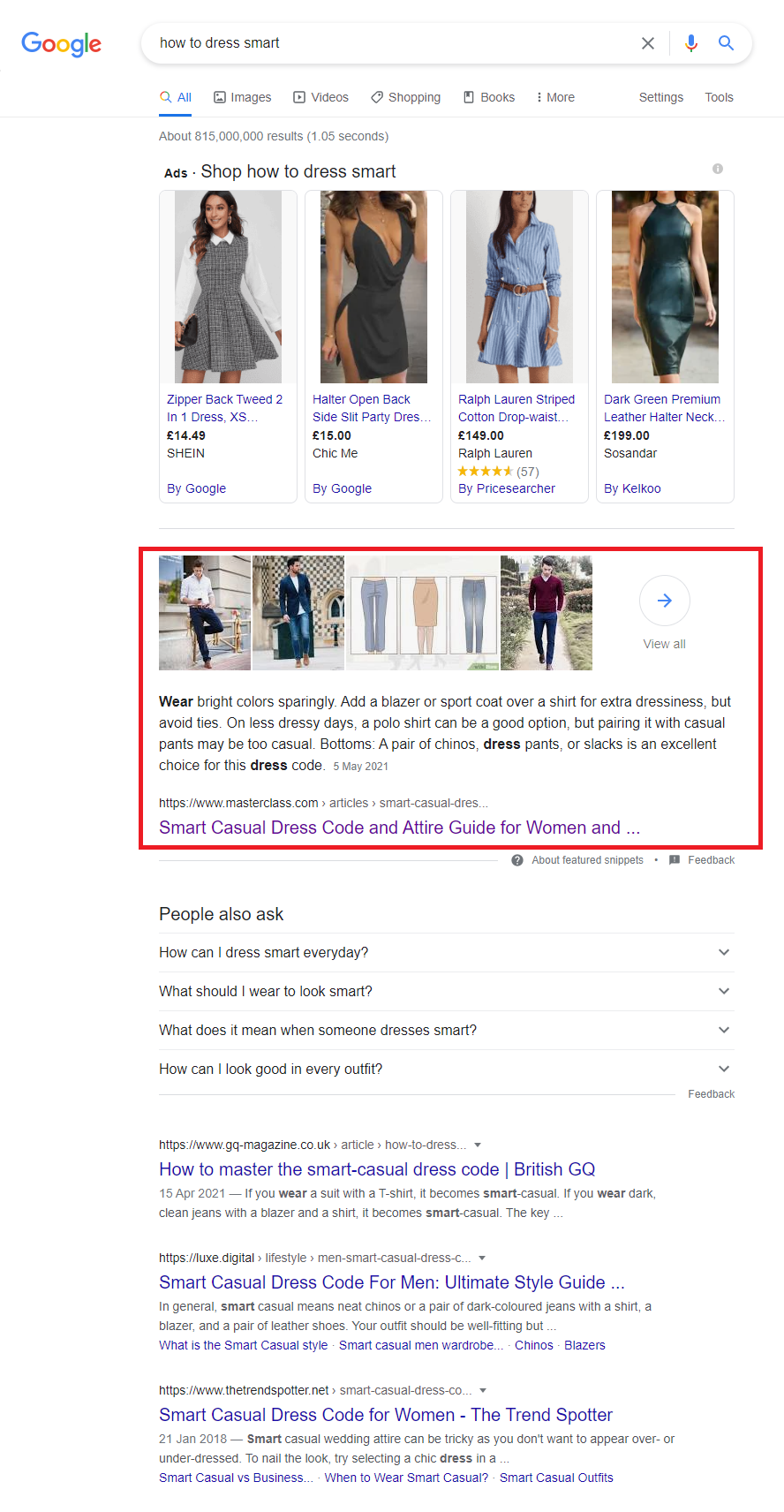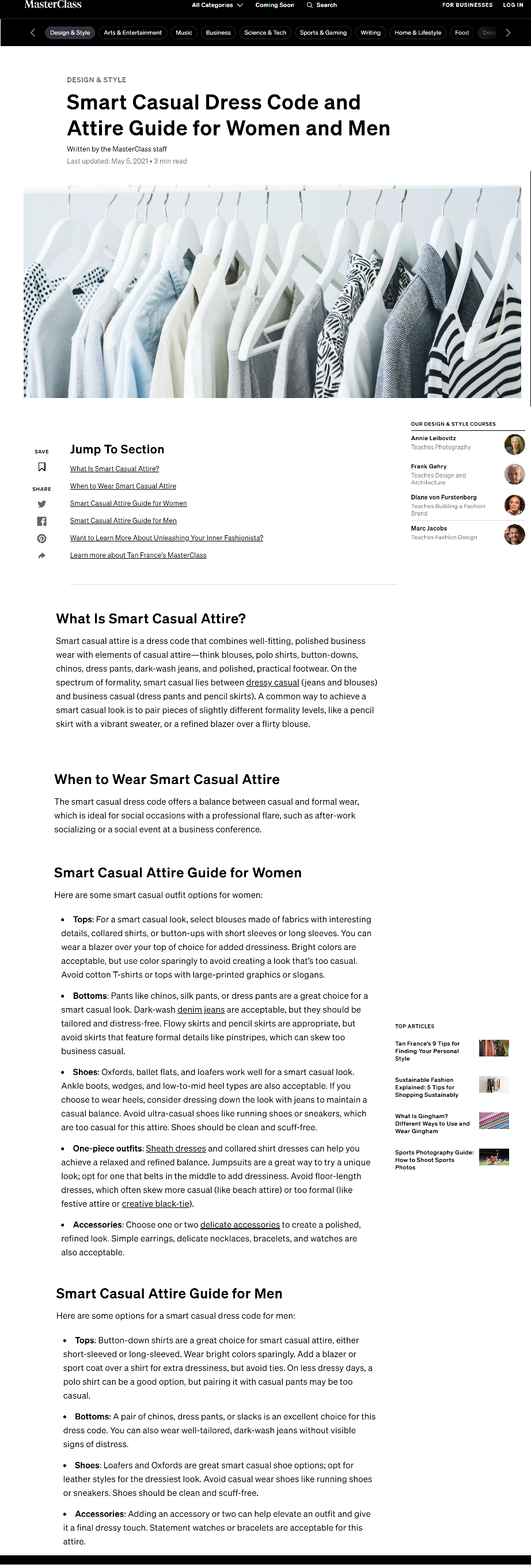Guide content is for users you want to convert who are already thinking about your brand, product or service. Your visitors may have various questions or concerns about you at different stages of the buying journey. These users are looking for answers to be convinced that you are right for them. You should make their process easier by developing a content hub or buying guide that answers these questions. Besides helping them in their decision process, guide content pre-empts any questions or customer enquiries that may otherwise be asked via emails, telephone calls or live chat.
Over the years what hasn’t changed is the majority of the time when your consumers are buying something or looking for information, their journey starts with Google. Understanding the search intent of your consumers and producing high-quality content to answer these questions or queries should be the key objective behind your guide content. I have shared below some SEO tips to create e-commerce buyer guides that work.
From personal experience working on several eCommerce guide content posts, users convert better after reading a buying guide. Creating targeted guide content with intent analysis of your search queries (how | what | why | can | which | best).

 I love this example from the Masterclass site. It appears as a featured snippet for the search term ‘how to dress smart’. They have divided their page into clear sections with jump links, which makes sense from a user experience.
I love this example from the Masterclass site. It appears as a featured snippet for the search term ‘how to dress smart’. They have divided their page into clear sections with jump links, which makes sense from a user experience.
SEO Tips for Ecommerce Buying Guides
Perform Keyword Research to nail down your target keywords
Create keyword-optimised sharable content that adds value and answers questions or concerns of your customers. Having a clear understanding of your buyer personas is crucial to see how you can address their pain points. Check customer queries sent via emails or asked via live chat to find common questions your customers have.
Perform long-tail keyword research. There are plenty of tools available to help you find those questions which relate to your product or service.
-
- Google Keyword Planner (free).
- AnswerThePublic (freemium).
- AlsoAsked: People Also Ask keyword research tool
- Check people also ask and related searches on Google SERPs. Use an extension like SEO Minion Chrome extension (free) to extract Google’s People Also Ask questions.
- SEMRush / Ahrefs (paid)
Optimise Title Tags & Meta Descriptions
Please read my guide to optimising your meta data. This is the first thing that users see on the SERP. So, it’s important to optimise your metadata to improve your clicks and draw attention away from your competition. The page title is one of the most important ranking factors for SEO as it helps search engines and users understand your page content. Use things like numbers, and dates on your title tag to make you stand out from the rest.
While not a ranking factor, your meta description should summarise what the page is about and help the user understand that the information present on the page would be right for the search query. Use keywords in your meta descriptions as the search query appear bold on the SERPs. Make it enticing enough to give users a reason to click on your guide over those of your competitors. When it comes to guides especially, giving a part of the answer up-front to show what you know helps. Also include a persuasive, compelling call to action to get them to read on.
Review Competitor Guide Content Format
Your content or content format should not be the same as that of your competition. It’s got to have an edge that makes you stand out. Check the guide content format and content outline of your competition. It could be;
- Long-form content as a listicle.
- Anchor links or “jump” links that work as an index of the article and are also good for UX. These jump links sometimes get shown on the SERPs.
- Step-by-step instructions as a numbered list. Formatting content using the appropriate HTML elements (<ul> / <ol> / <table>) can help optimise for Answer boxes.
- Content using accordions or carousels.
- FAQ page etc.
Check if your page includes elements such as videos, and images found on competitor pages. This can give you an idea to structure your guide page in a way that users can digest that information.
Also, review competitors’ guide pages to get a rough idea of their word count to understand how much detail you need to go into for similar topics. There is no direct correlation between the length of word count to ranking. You just need to produce a guide with better unique, relevant content to rank better than your competition. Exploit gaps that competitors didn’t cover in their content.
Optimise Guide for EAT
The guide content also contributes to your site’s EAT (expertise, authoritativeness and trustworthiness). You need to show your visitors that you are the expert behind the guide content with real knowledge to gain their trust and find it useful to ultimately convert. Expertise is important for Google too, so make sure you show off your expertise and specialist knowledge with whatever content you build. Make sure it satisfies user intent and is comprehensive enough.
Never rush with guide content. Take your time to produce well-researched quality content written by an expert who knows the topic well and that adds value to your users and your site. Don’t just copy content that can be found elsewhere. Produce original content with unique data. When accompanied by expert quotes that you can highlight in your guide, it makes your guide credible and stands out from the rest of your competitors.
Optimise for Featured Snippets & People Also Ask
Featured snippets on SERPs are usually triggered by a question, which is a great opportunity for your guide content as they improve clicks and traffic. The best way to obtain a featured snippet is by replicating the current format (headers, bullets style etc) of an existing featured snippet for your guide topic. Replicate some parts of the current SERP’s featured snippet result but you will need to add a unique spin on your content, with a much more relevant answer. Make sure your title tag and meta descriptions use the question that you’re trying to answer and make sure they stand out. Add relevant images to our guide and optimise it for the featured snippet query or risk Google showing someone else’s image.
Implement your headings as questions from “People Also Ask” with a ‘?’ at the end. These will help Google bots understand the structure of your content easily.
Optimising Content with Relevant Schema
Using relevant Schema to enhance visibility for relevant search features. They are a great opportunity to gain more SERP real estate.
- FAQPage – enhance inclusion in FAQ Links and PAAs.
- HowTo – targets the How-to rich result that will provide step-by-step instructions in the search results.
- Speakable – specifies a voice summary of a page for Google Assistant.
Check out the example from Sports Direct – Football Boots by Surface Type page optimised with FAQPage schema.

Optimise Internal Links in your Guide
Utilise your guide content to add internal links to your commercially important categories and product pages to push users down the funnel. These relevant internal links from your guide pages to your services, products and your key traffic-driving pages further improve the existing level of performance.
Promote your Content Guides & Build Links
Think of where your persona spends time and consider ways to take your content there. It could be on social platforms like Facebook, LinkedIn, Instagram, Pinterest or TikTok for example or video platforms like YouTube, Vimeo etc. Try to create content for those platforms to drive traffic outside traditional SERP results. Repurposing your guide content and promoting on these platforms where your audience spends a lot of time can drive you lots of traffic.
You must also build high-quality, relevant backlinks to your guide as links are still one of the strongest ranking factors.
How to measure the performance of Guide Content?
- Traffic to the guide landing page: We can see how each buying guide page performs in Google Analytics by looking at Channels -> Organic Search -> Landing Page (Applied as a primary dimension).
- Measure assisted conversions and revenue.
- Backlinks.
- Keyword rankings.
